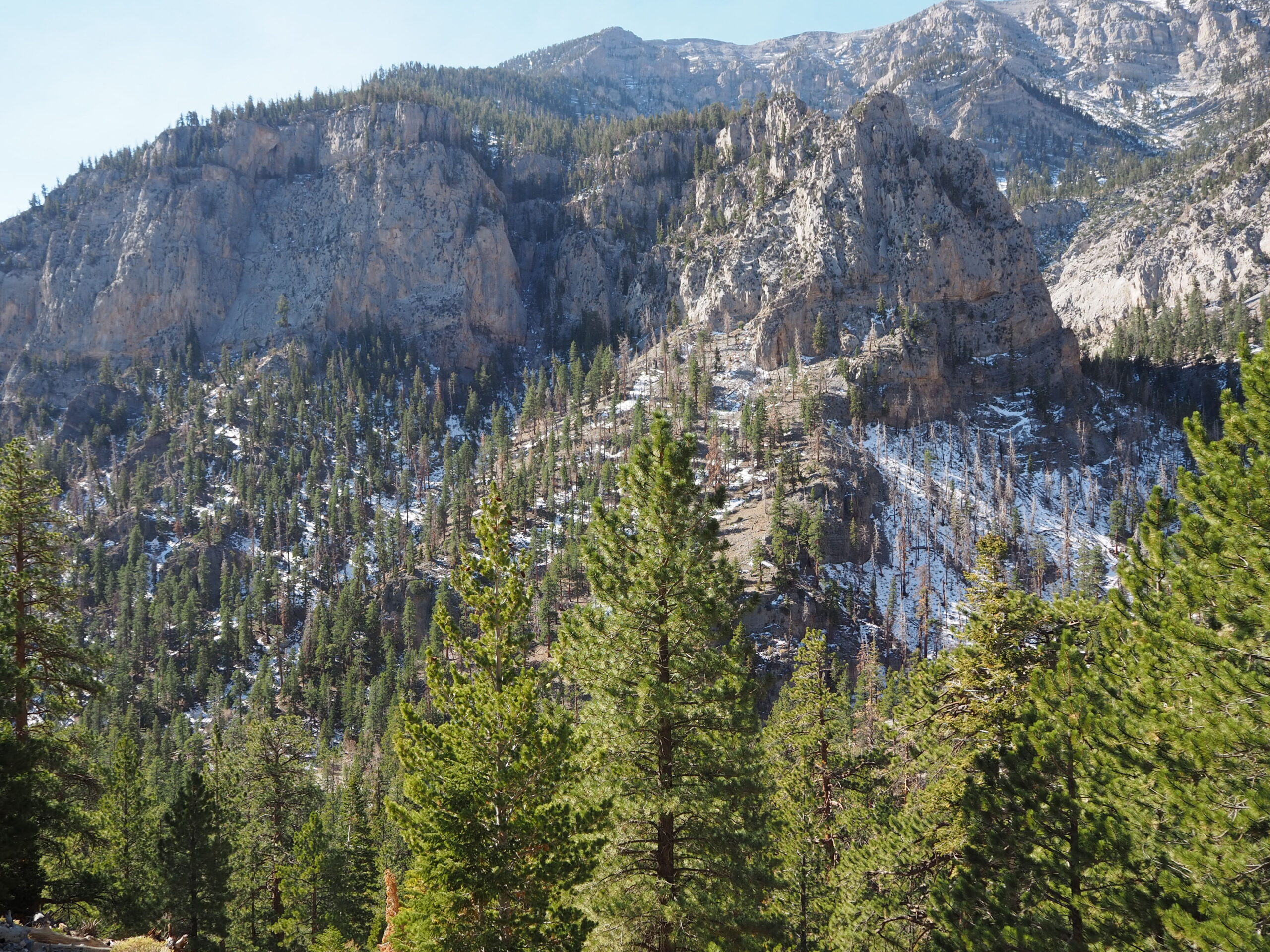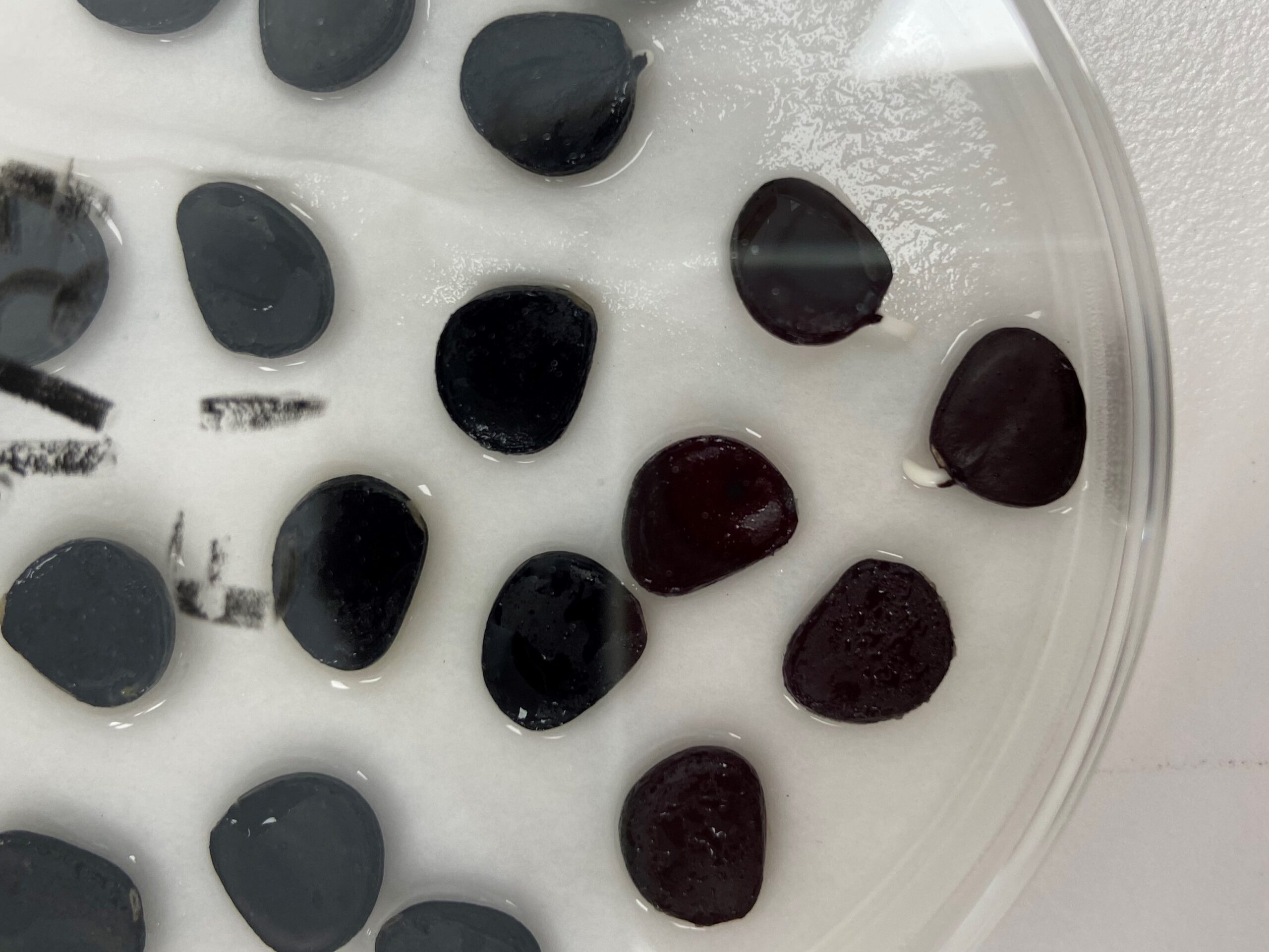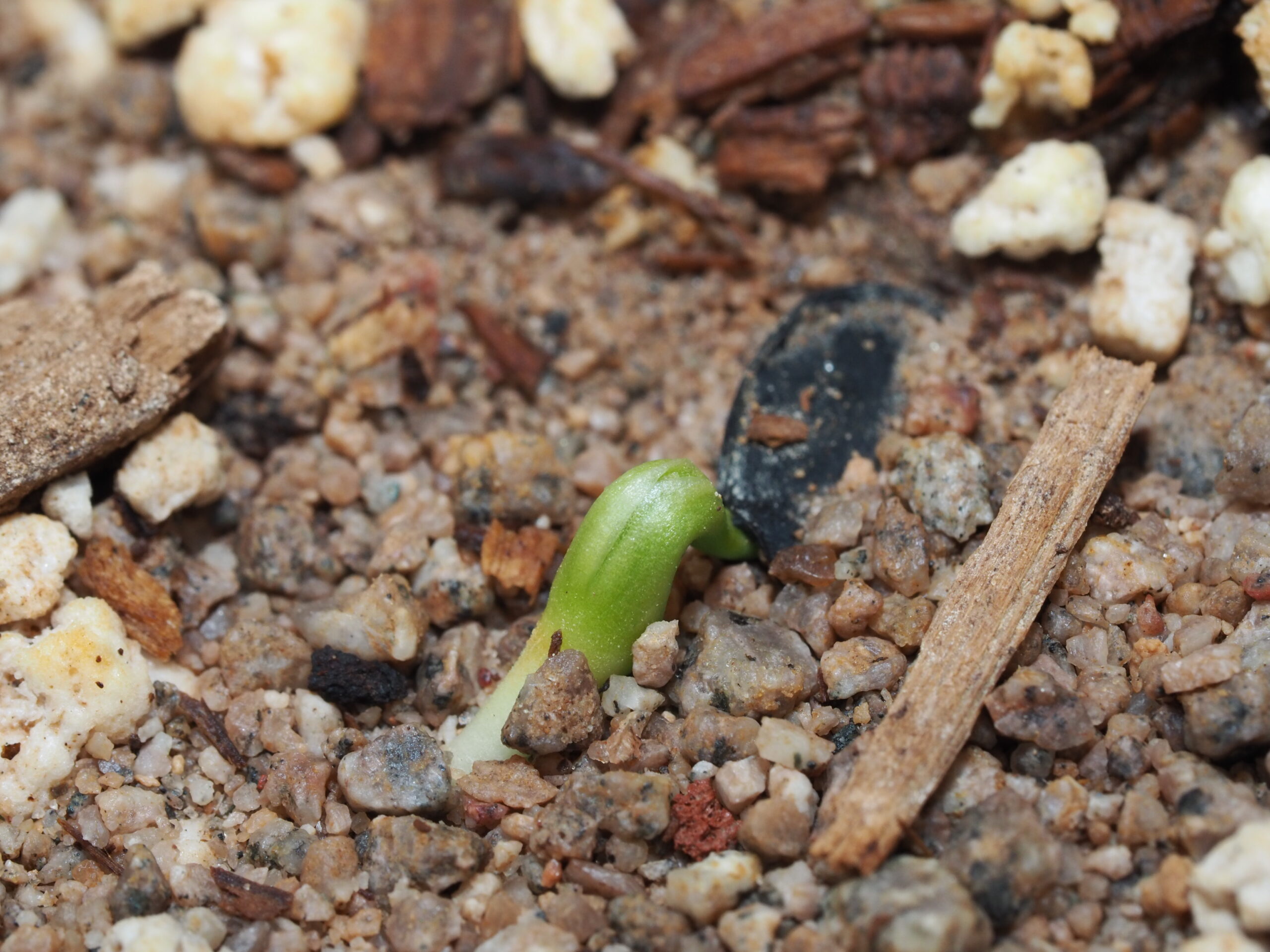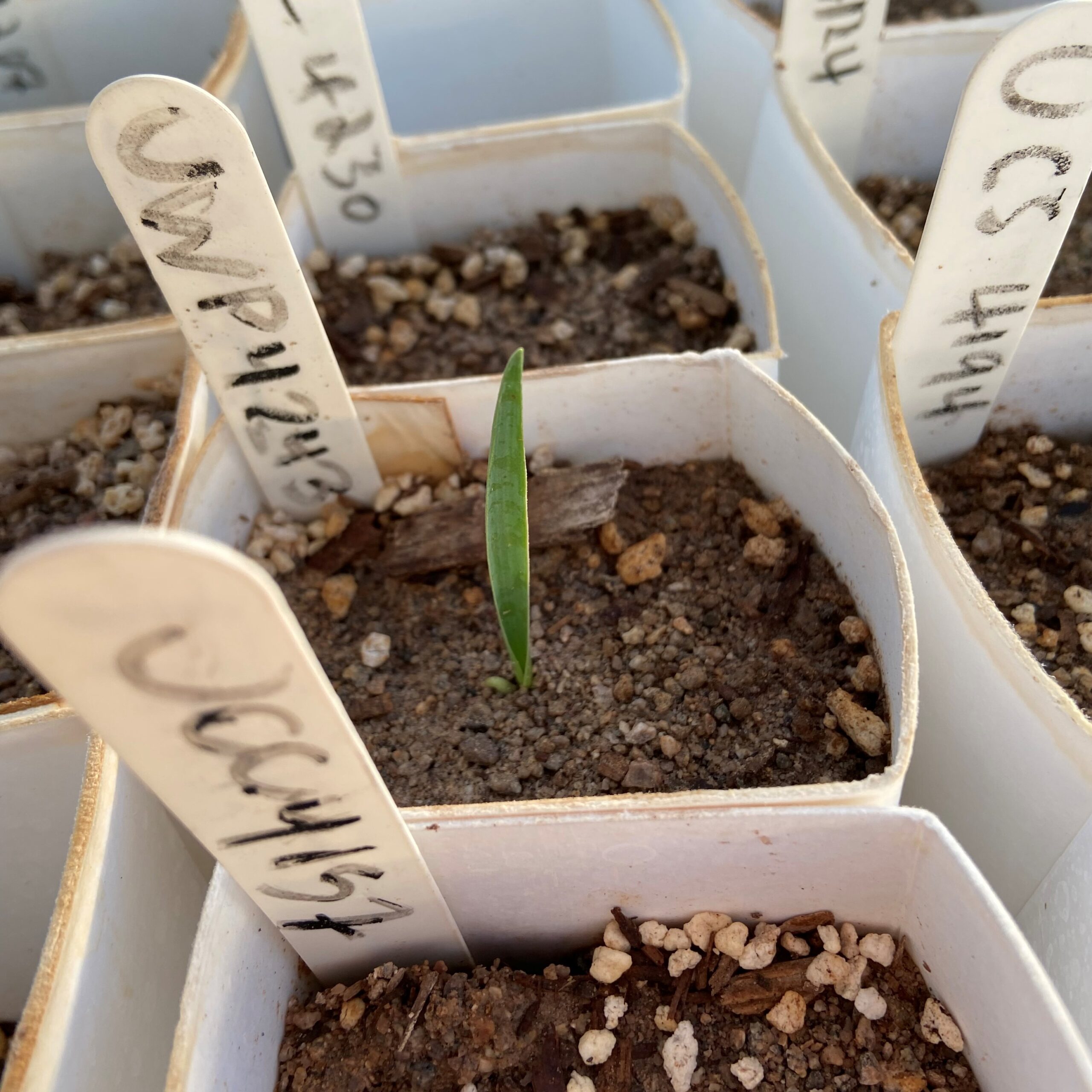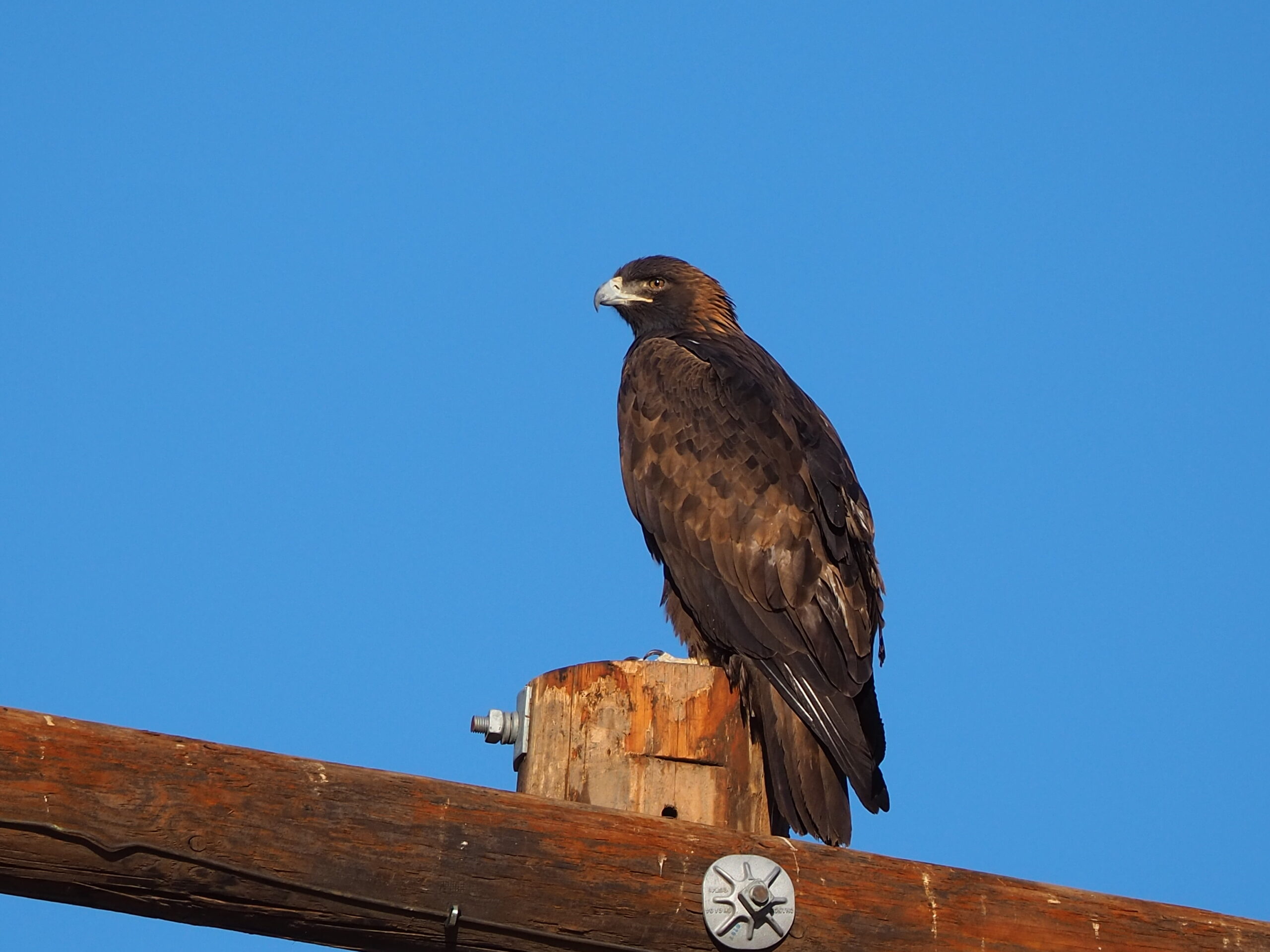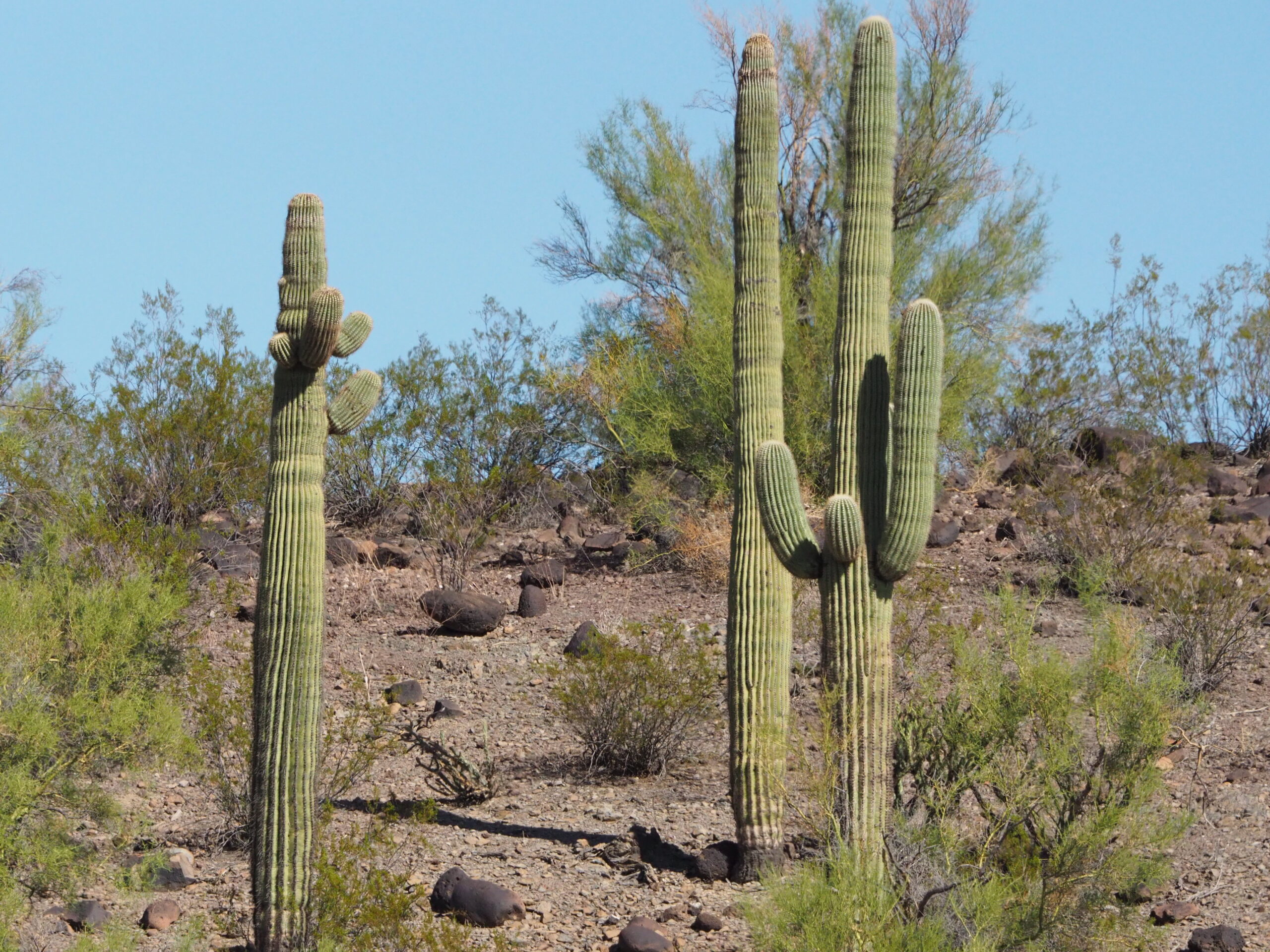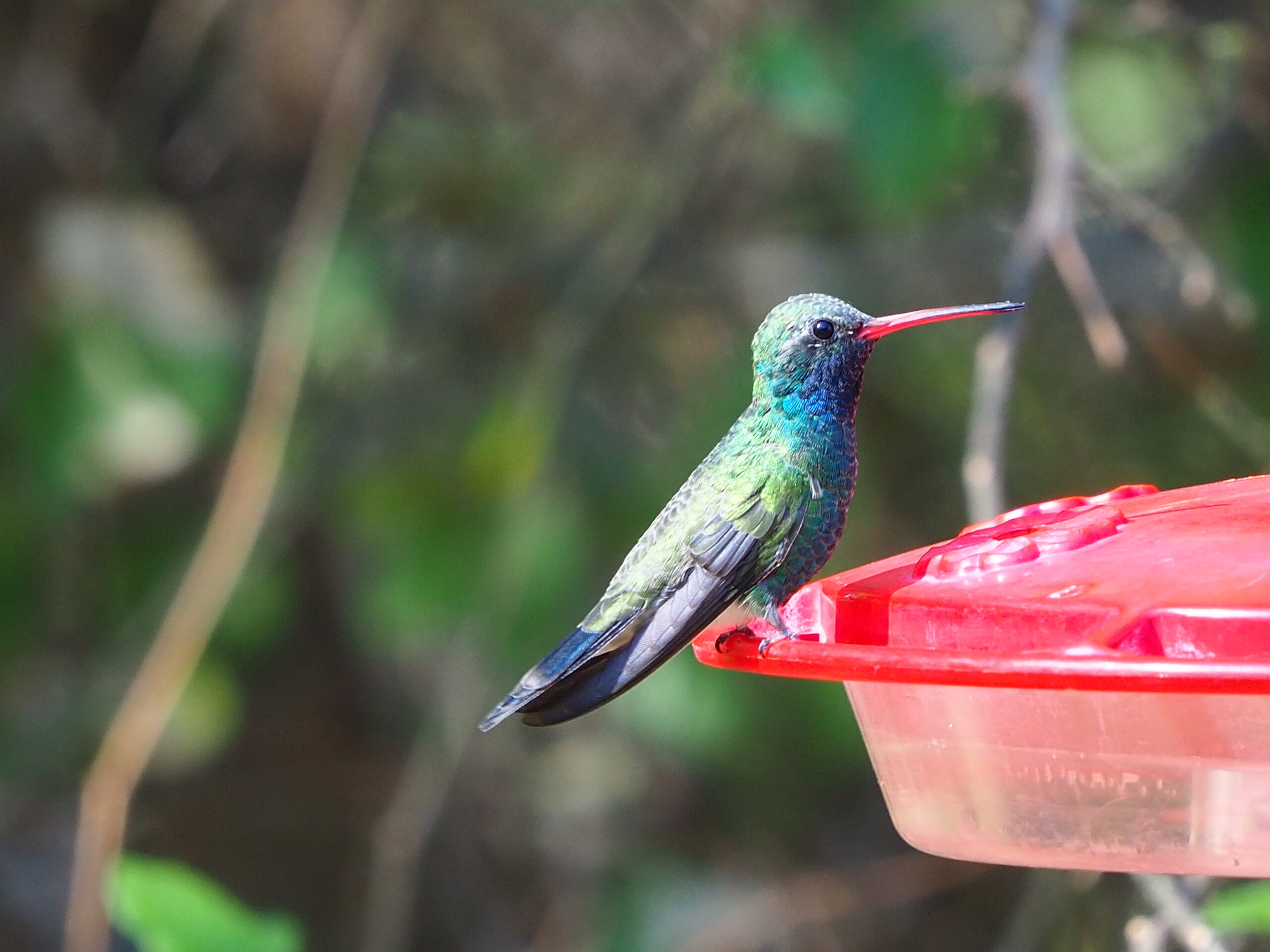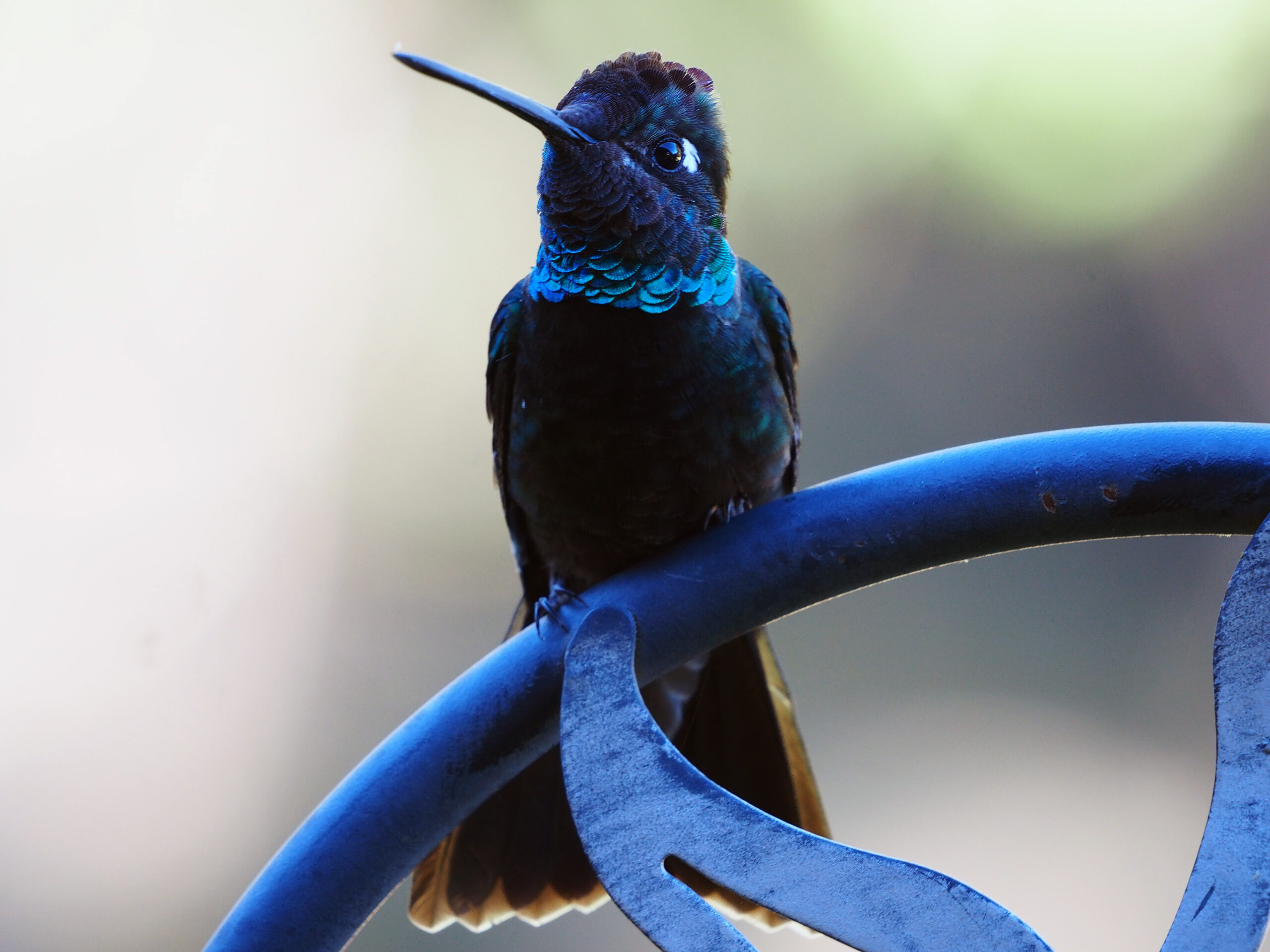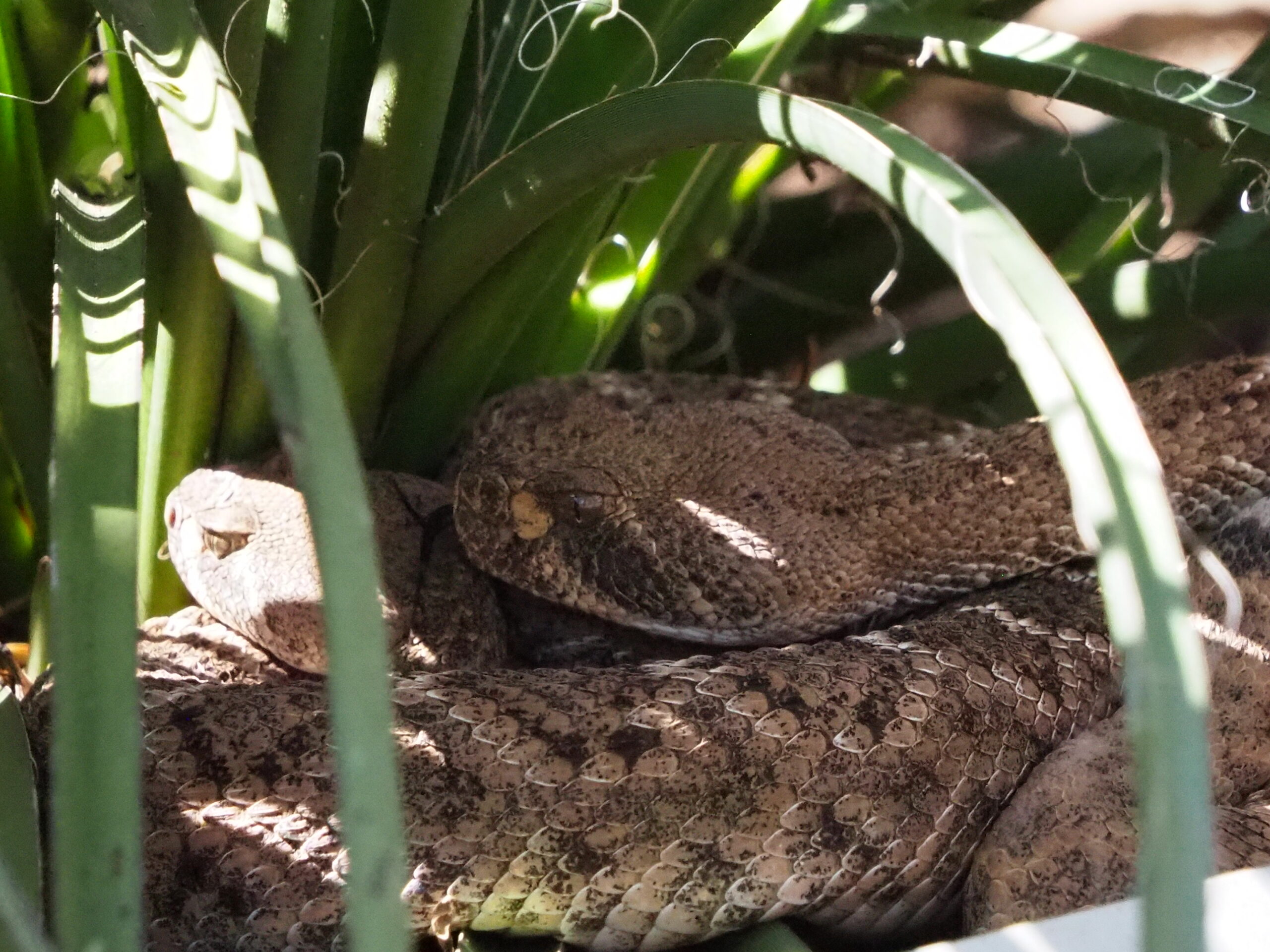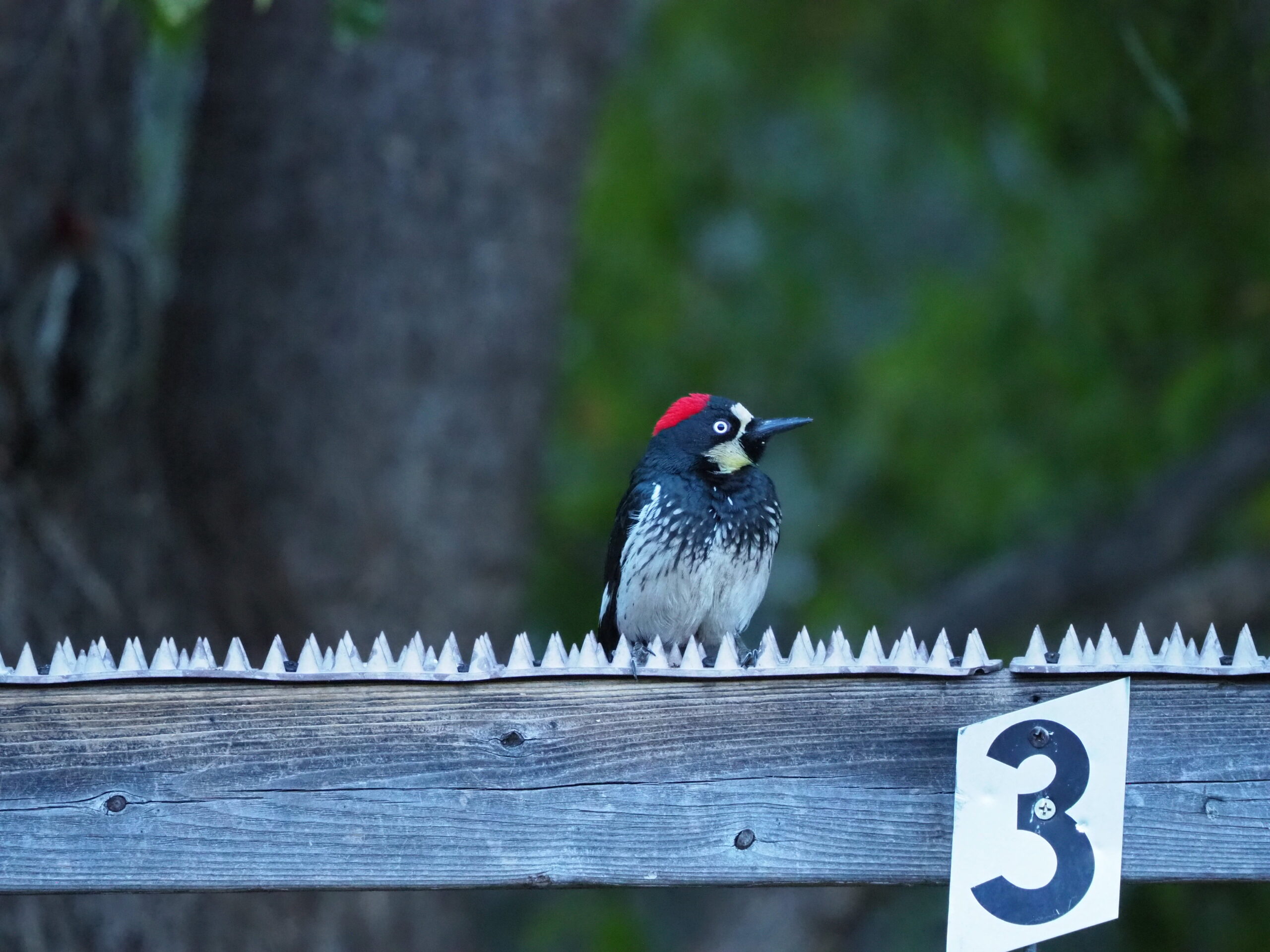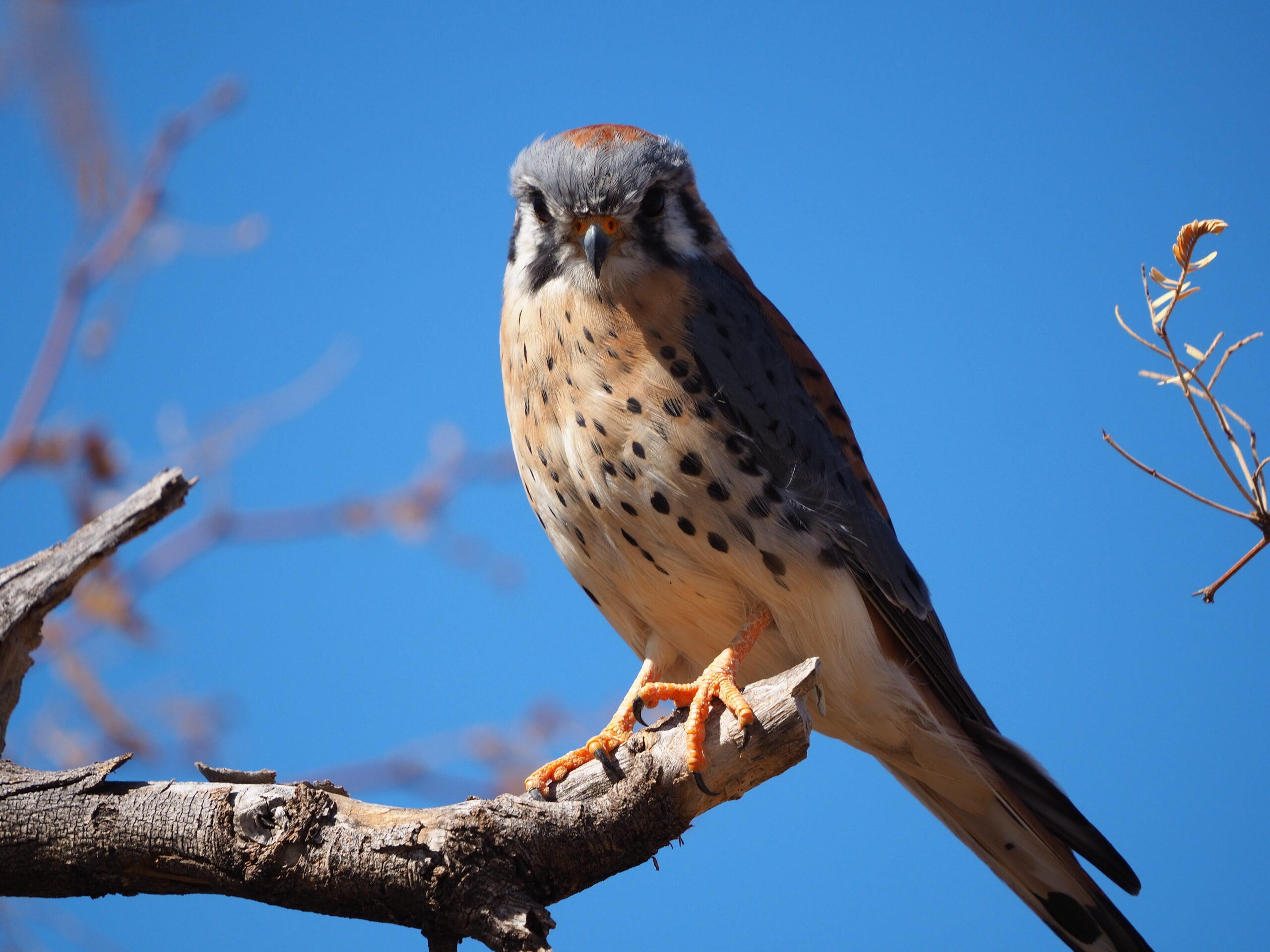Back in July we participated in a restoration planting weekend alongside members of the Sky Island Alliance and the Nature Conservancy at Turkey Creek and Cobra Ranch (in/near the Aravaipa Canyon Wilderness). We stayed at a fantastic house on the Nature Conservancy Property. They had a sleeping porch and it was AWESOME!! The only thing that was not awesome was that I hadn’t put on bug spray the first night and in one hour of being outside around 6pm, I had gotten over 20 mosquito bites. That has been one constant in my life; if there are biting insects within a one mile radius of me, they will find me!! HAHA

Nature Conservancy Guest House – Our home for the Planting Weekend. It sure beat camping!!!

The sleeping Porch at the Nature Conservancy House. Loved sleeping “outdoors” but with the screens to keep the bugs out!!
At both our sites we were planting Giant Sacaton. It is traditionally found in flood plain ecosystems. In the areas we were working, past land uses had disrupted the flood plain cycle and taken the area towards a more river-channel model. So historically this area experienced rain events and the water would be caught up in vegetation, spread over a large area and stay for a relatively long time and soak into the ground. However, with roads being cut into the earth by ranchers in the area (who have not been in the area for 50+ years) and grazing taking away much of the vegetation that used to slow down the water, now when there are rain events the water flows into the channels formed by former roads and speeds off the landscape. This then allows fewer plants to grow, due to lack of water, as well as these roads/streams continue to be cut further into the earth and when rain comes it won’t spread across the landscape because it now has to crest a stream bank. It is in an effort to stop this cycle and restore a floodplain cycle that BLM and the Nature Conservancy are manually filling in old road channels and planting Giant Sacaton to try and slow down the water of new rain events.

Turkey Creek
The whole goal of the involved planting process is to allow the small plants the best opportunity to survive in this desert environment they are suddenly thrown into. Holes are dug and then filled halfway with water. This water is then allowed to soak into the ground. This provides the plant with a moist environment so that it isn’t immediately stressed out when it is planted.

Hole that is pre-watered and ready for planting!
Once the holes are pre-watered a glop [a very scientific term, I know] of DriWater is added to the bottom of the hole. DriWater is a gel that is about 97% water and the other 3% is cellulose and some other materials. Apparently how it works is that when it is placed in the ground the microbes in the soil will eat some of the cellulose and other materials and the chemical reaction that that produces will release water to the plant(?!?!). That’s at least the gist that I got from trying to research the product.

Sky Island Alliance Volunteer Alan holding DriWater
Then the plants are placed in the holes and the dirt is back filled into the hole.

Planted Giant Sacaton
Then the plants receive a layer of water on top in order to help settle the dirt around them and to once again give them the best chance to survive. Then a layer of mulch is added to help trap water as well as keep direct sun off the dirt surrounding the plant. The more water you can give to and the cooler you can keep plants in the desert, the better!

This is a field of our plantings. They have been top watered and are just waiting for mulch. Everywhere you see a yellow or black tube, there is at least one of our plants there! We planted about 5 times the area you see in this picture.
And no trip would be complete without some seemingly disastrous turn of events forcing biologists to be resourceful in order to save their project!!! To begin with the water trailer we brought with us was leaky down where the hose joins the tank and the motor. And the drive out to the Turkey Creek planting site was…rough?…undeveloped?….insane? Any of these would work. And when we drove up there we had to haul the large water trailer behind our truck. Needless to say there was always concern that something bad would happen. We made it through the first day of plantings at Turkey Creek, using as much water as we could, as quickly as we could, in order to get as much out of the tank before it all leaked out. The next morning however, on that INSANE drive out to Turkey Creek, we were about 0.1 miles from our site when we looked behind us and the ground was getting soaked. On the last big set of rocks the leaky hose had been completely ripped off the tank. Then a 20 minute ordeal ensued of trying to get all possible water into buckets, while trying to plug the hole with hands and find some way to get it so we could drive to our site and start using the water. Eventually a pair of leather work gloves were shoved into the pipe and we were able to limp up to our site. Then using some wire off of plant flags and some major ingenuity, the leaky hose was attached and we were once again in a race against the leak to use as much water as possible. It was a level of excitement that we weren’t expecting that morning! But we were still able to use a lot of the water and complete our plantings!

The Water Trailer of DOOM!!
During this weekend I saw some other awesome animals. I saw my first tarantula in the wild. While walking in the stream bed at Cobra Ranch we saw a turtle near the bank. It kept trying to climb the bank to get away from us, but the angle was too steep so then he would tumble over backwards! 🙁 After he did that twice we placed him on the top of the bank so he could get away and stop stressing out. Later that day we startled a rattlesnake and in its attempt to run away it fell off and tumbled down the side of a fairly large stream bank too. We were just an epidemic of scaring animals that day!
The planting weekend was a great experience. It was fun to work with and learn from a group of dedicated and impassioned people who come out on their weekends to help restore ecosystems!
Heather Paddock
Safford, AZ
BLM
